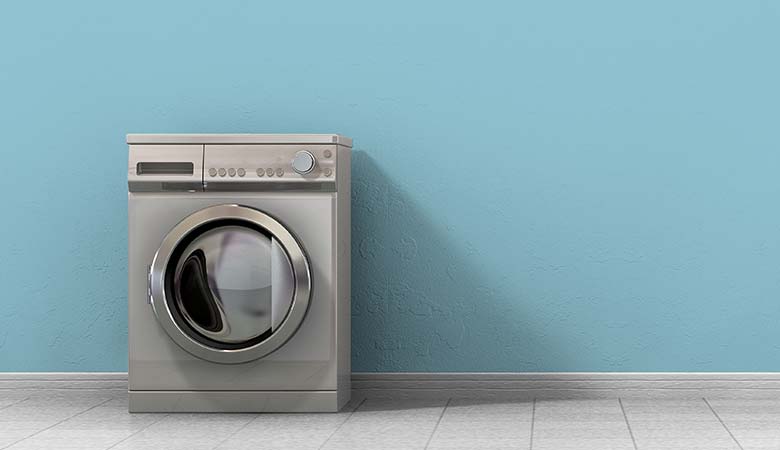What we know as the modern refrigerator has been around since the early 1900s; however, advances in technology have allowed us to see improvements in how these common household appliances work. With these changes, society has seen a wide range of popular refrigerator brands emerge, in addition to a variety of fridge models, sizes, and weights.
How much does a refrigerator weigh? A standard, full-sized refrigerator can weigh between 200 and 400 pounds, while a mini-fridge can be between 25 and 50 pounds. The exact weight of your refrigerator will depend on its model and specifications.
It is easy to believe that refrigerators have only gotten lighter over time due to technological improvements—similarly to our phones and televisions. However, you would be surprised to find that the additional features our iceboxes have now make them sometimes outweigh their ancestors. The weight all depends on the type of fridge and its size.
What is Inside a Refrigerator?
A refrigerator contains four major components to work effectively:
- Refrigerant – A refrigerant is a liquid (often dichlorodifluoromethane, or “CFC-12”) that is designed to evaporate within the refrigerator to create its internal cold temperatures. It runs through the coils of the heat-exchanging pipes, continually cycling through its liquid and gaseous forms.
- Compressor – The compressor of a refrigerator is responsible for compressing the refrigerant while it is in its gaseous form. Under this pressure, the refrigerant heats up.
- Heat-Exchanging Pipes – The coiled or serpentine-shaped pipes of a refrigerator can be found in two separate sets, with one set stored inside the unit, while the other set remains outside. These pipes are responsible for holding the refrigerant. As the compressor heats the refrigerant, the pipes help dissipate its heat. Eventually, the refrigerant condenses into a liquid form.
- Expansion Valve – The resulting liquid refrigerant flows through the refrigerator’s expansion valve, after which it boils and vaporizes as its temperature drops. The cold gases are what keeps the fridge cold. The gases are eventually taken in by the compressor, and the entire process cycles through again.
All modern refrigerators have these key components, and it is these parts that help attribute to their weight—although it is important to note that it is not a significant amount when compared to the overall weight. For example, refrigerator compressors can weigh about 15 to 20 pounds on average, while its adjacent parts can weigh much less, depending on the materials used to create them.
What Makes a Refrigerator Heavy?
The bulk of what makes up the weight of a refrigerator is its size and features.
Refrigerator Size & Weight
In general, it is safe to assume that a fridge will likely weigh a little over 10 pounds for each cubic foot in size, especially for smaller refrigerators.
For example, this Black & Decker mini-fridge measures to be approximately 3.375 cubic feet. According to this logic, this means that this small refrigerator should weigh around 33 to 34 pounds. (If you check this fridge’s weight listing underneath its specifications, you’ll find that its weight is 33.1 pounds!)
But what about larger refrigerators? The 10-pound rule is less likely to apply to fridges larger than 20 cubic feet—although it helps establish a good starting point if you’re trying to figure out its approximate weight. The good news is, however, that the average size of most refrigerators is 18 cubic feet, so you could certainly calculate the weight of many of these appliances.
Refrigerator Features & Weight
The following are some standard refrigerator features to consider when calculating their weight. With each feature, you will want to add more to your initial weight estimate:
- Ice dispenser
- French doors or additional freezer drawer
- Intricate shelving design
- Temperature-controlled crisper drawers
Overall, it is safe to assume that newer “smart refrigerators” may weigh on the heavier side, simply because they have more components and features than your standard top-freezer unit.
Other Factors Affecting Refrigerator Weight
Other factors that can contribute to a refrigerator’s weight is its age. Older fridges, especially those made before 1995, will likely be much heavier than modern-day ones. This is because early refrigerators were made with denser materials—not the lightweight ones we use today.
Weight vs. Moving Refrigerators

If you plan on purchasing a refrigerator and having it moved into your home, or are moving your fridge into a different house, knowing the weight is important. From the weight, you can determine how you will be able to best transport a refrigerator from one place to another.
The best way to move a refrigerator is to keep it right-side-up on the back of a truck to prevent internal components from shifting unnecessarily and leading to damage. Use a ratchet strap or sturdy rope to secure the fridge’s door(s) shut. Make sure all of the shelves and internal drawers are removed prior to moving to prevent breaking; this will also help reduce the refrigerator’s weight.
If you find your refrigerator is still too heavy to move, even with the help of extra hands and an appliance dolly, consider removing the doors. To prevent excess debris from entering during transit, wrap a large moving blanket or regular blanket around the exposed area.
Other Related Questions
What is the average size of a mini-fridge?
Most mini-fridges range from 1.5 to 7.5 cubic feet in size. To find out their approximate weight, multiply the size in cubic feet by 10. The weight of a mini-fridge will usually be a little higher than your result.
How do you make a refrigerator last?
There are five key things you can do to ensure your refrigerator continues to run efficiently for years to come:
- Reduce crowding. Make sure your refrigerator has plenty of space around it to ensure it has room to release hot air. As a rule of thumb, fridges with fans in the back require at least a 3/8th inch of space away from surrounding walls, cabinetry, and countertops (this applies to the refrigerator’s sides and top). Fridges that do not have fans and instead have coils down the back (static condenser models), on the other hand, require at least three inches of space at the top and one inch of space between the back of the appliance and the wall.
- Keep your refrigerator away from hot areas. Avoid placing your refrigerator next to a stove or oven. This will ensure your refrigerator does not have to work as hard to keep its contents cool.
- Use the right electrical outlet. Refrigerators work best when they are plugged into the appropriate 115-volt, 60 Hz, AC-only electric outlet. Most homes have this outlet installed in the kitchen area, usually near a nook where fridge placement is intended. However, if you plan on installing a fridge in a separate area, such as the garage, make sure this type of outlet is available.
- Dust often. It’s easy to forget that dust can gather everywhere, and that includes behind and under the refrigerator too. Make sure to vacuum lingering dust from these areas a few times a year, especially if your fridge has exposed condenser coils.
- Keep the refrigerator door closed. This is a given with any fridge you own, but the more often you open the door, the harder it has to work to keep everything cold. Make sure you don’t have any food items blocking the door from closing all the way, either.
How long have refrigerators been around for?
The earliest concept of the refrigerator came from the Scottish professor, William Cullen, in 1755. However, the first modern, electric, domestic refrigerators we recognize today weren’t developed until the early to mid-1900s.






